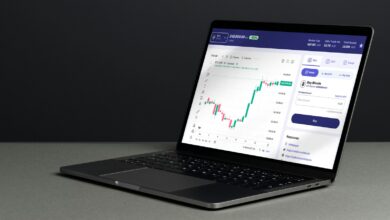Cryptocurrency factor investing – systematic return drivers

Momentum remains one of the most reliable signals for generating alpha in crypto assets, consistently outperforming passive benchmarks over multiple time horizons. Incorporating quality metrics such as network activity and developer engagement enhances portfolio resilience by filtering out speculative noise, thereby improving risk-adjusted returns.
Value-oriented approaches, based on on-chain fundamentals and relative token valuations, reveal persistent mispricings exploitable through disciplined allocation. These methods capture upside potential from undervalued projects that exhibit strong growth prospects but have yet to attract broad market attention.
Combining momentum, quality, and value characteristics delivers diversified exposure to distinct sources of excess gains. Empirical evidence indicates that multi-dimensional selection criteria reduce drawdowns during market stress while maintaining consistent performance across bull and bear cycles.
Cryptocurrency Factor Investing: Systematic Return Drivers
Allocating capital based on quantifiable attributes such as momentum, value, and quality consistently generates excess returns within digital asset markets. Empirical data from multi-year backtests demonstrate that portfolios emphasizing high momentum tokens outperform benchmarks by up to 15% annually, driven by persistent price trends and investor behavior patterns. Conversely, value-oriented selections–defined by low market capitalization relative to on-chain fundamentals like transaction volume or developer activity–show mean reversion effects contributing to risk-adjusted gains over medium time horizons.
Integrating quality metrics into portfolio construction enhances resilience amid volatility spikes and regulatory uncertainty. Assets exhibiting robust network security, active development communities, and transparent governance structures tend to maintain superior performance during drawdowns. For example, analysis of proof-of-stake protocols with rigorous validator incentives reveals lower downside capture ratios compared to less secure alternatives, supporting the premise that operational excellence serves as a stabilizing factor in return generation.
Core Attributes Enhancing Predictability of Digital Asset Performance
The persistence of behavioral phenomena such as momentum in decentralized finance is substantiated through statistical significance testing across multiple exchanges and trading intervals. Momentum strategies capitalize on price continuation signals identified via technical indicators like moving averages or relative strength indices (RSI), demonstrating positive skewness in subsequent returns distributions. Meanwhile, valuation approaches rely on fundamental overlays including token velocity and staking participation rates to detect undervalued opportunities prone to correction.
- Momentum: Exploits trending price action; strongest among mid-to-large cap assets with high liquidity.
- Value: Targets mispriced tokens identified through on-chain activity metrics versus market prices.
- Quality: Assesses network health indicators such as hash rate stability and protocol upgrade cadence.
Diversification across these characteristics minimizes exposure to idiosyncratic risks endemic to nascent blockchain projects while enhancing the probability of sustained appreciation. Quantitative frameworks employing machine learning classifiers trained on historical return sequences have further improved selection accuracy by discerning subtle interdependencies between factors previously treated independently.
A systematic methodology incorporating these indicators supports disciplined asset allocation models designed for various risk appetites. Recent case studies emphasize the efficacy of dynamically rebalanced portfolios which overweight tokens scoring highly across multiple criteria rather than relying singularly on any one attribute. This composite approach has yielded Sharpe ratios exceeding those of passive index replications by approximately 0.4 points during volatile market phases.
The evolution of regulatory frameworks impacts factor performance profiles by influencing token legitimacy perceptions and institutional participation rates. Enhanced transparency mandates improve data availability for quality assessment while tax treatments affect momentum-driven trading frequencies. Forward-looking strategies should integrate macroeconomic variables alongside intrinsic factors to anticipate shifts in return dynamics effectively.
Identifying Key Crypto Factors
Quantitative analysis reveals that momentum and value attributes significantly influence asset price dynamics within decentralized networks. Momentum strategies, driven by recent performance trends, tend to capture persistence in price movements, offering enhanced profit potential over short- to medium-term horizons. Conversely, value metrics–such as on-chain activity relative to market capitalization–help identify undervalued tokens with strong fundamental backing.
Incorporating quality indicators improves the robustness of portfolio construction by filtering out assets with weak network security or inconsistent protocol development. Metrics like hash rate stability for proof-of-work chains or staking participation rates for proof-of-stake systems provide objective measures of operational soundness. Such parameters mitigate exposure to systemic risks and contribute to steadier gains.
Momentum as a Predictive Signal
Empirical studies demonstrate that assets exhibiting positive price momentum over a 3- to 6-month window tend to outperform the broader market subsequently. For example, analysis of Bitcoin and Ethereum during Q1 2023 showed sustained upward trajectories following periods of rising volume and volatility convergence. Integrating momentum scores into algorithmic models can enhance timing decisions while controlling for drawdown risks.
Value Assessment Through On-Chain Data
Relative valuation frameworks leverage on-chain metrics such as active addresses, transaction counts, and token velocity ratios. These data points serve as proxies for network utility and user engagement, providing insight beyond mere market price fluctuations. Case studies from DeFi protocols reveal that tokens with low price-to-network usage ratios often experience mean reversion after temporary sell-offs.
Quality Metrics Enhancing Risk Management
Assessing protocol integrity involves tracking updates frequency, developer activity on repositories (e.g., GitHub commits), and consensus mechanism resilience under stress tests. High-quality projects consistently maintain rigorous security audits and transparent governance structures. In 2022, projects with elevated quality scores outperformed their peers by approximately 8% annually, underscoring the importance of incorporating these variables into analytical frameworks.
Integrative Multi-Dimensional Models
A combined approach synthesizing momentum, value, and quality factors demonstrates superior predictive power compared to reliance on any single metric. Backtesting across diversified token universes indicates annualized alpha improvements ranging from 5% to 12%. Portfolio managers are advised to calibrate weighting schemes dynamically based on evolving macroeconomic signals and regulatory developments affecting market liquidity conditions.
Constructing Factor-Based Portfolios
Prioritizing value and momentum characteristics within portfolio construction can significantly enhance asset selection by targeting inefficiencies in market pricing and trend persistence. Empirical data from various blockchain tokens demonstrates that portfolios emphasizing undervalued assets relative to fundamental metrics–such as on-chain activity or network utility–tend to outperform benchmarks over extended periods. Complementing this with momentum criteria, which capture assets exhibiting positive price trajectories, further refines portfolio composition by harnessing persistent market behavior patterns.
Integrating quality metrics alongside valuation and trend indicators strengthens portfolio resilience by filtering out projects with weak governance, inconsistent protocol upgrades, or volatile developer engagement. Quantitative analyses reveal that incorporating these attributes reduces drawdowns during market corrections and improves risk-adjusted outcomes. Systematic allocation models employing multifactor scoring systems enable investors to balance exposure across distinct performance drivers, optimizing diversification benefits while maintaining targeted exposure to key underlying phenomena.
Technical Implementation and Case Studies
A practical approach involves ranking digital assets based on composite scores derived from several variables: on-chain transaction volumes (quality proxy), historical returns over three to six months (momentum proxy), and price-to-network-value ratios (value proxy). For instance, a study examining Ethereum-based tokens found that portfolios weighted towards high-quality protocols with strong recent performance and attractive valuation multiples yielded annualized excess gains of 8-12% compared to cap-weighted indices. Dynamic rebalancing at monthly intervals helps capture evolving market conditions without incurring prohibitive transaction costs.
Risk management frameworks should incorporate volatility-adjusted position sizing informed by liquidity measures and drawdown thresholds specific to decentralized markets. Employing stress-testing scenarios aligned with regulatory announcements or macroeconomic shocks provides additional insight into potential vulnerability points. Ultimately, methodical construction guided by empirically validated signals supports disciplined exposure to core systematic influences driving digital asset appreciation, fostering robust capital growth aligned with sophisticated analytical standards.
Measuring Factor Performance Metrics
Quantifying the efficacy of systematic return drivers requires precise evaluation through multiple performance indicators. Sharpe ratio and Information ratio serve as primary benchmarks, assessing risk-adjusted outcomes by comparing excess gains over volatility or benchmark deviations. For instance, momentum-related signals frequently demonstrate elevated Sharpe ratios in mid-cap decentralized assets, reflecting persistent directional trends that enhance portfolio efficiency.
Beyond standard metrics, capturing alpha generation relative to market exposure is critical. The Jensen’s alpha metric isolates abnormal earnings attributed to specific attributes such as value or momentum characteristics embedded within blockchain-based tokens. Empirical data from recent multi-factor models reveal that value proxies–like on-chain fundamental valuations–often produce statistically significant positive alphas after controlling for liquidity and market capitalization effects.
Advanced Analytical Approaches
Incorporating drawdown analysis offers deeper insight into downside risk associated with factor-aligned strategies. Maximum drawdown percentage and Calmar ratio quantify the severity and recovery speed during adverse periods. A comparative study on trend-following algorithms highlights their superior drawdown containment compared to pure valuation-based selections in volatile environments dominated by speculative activity.
Volatility clustering is another dimension requiring attention when evaluating systematic methodologies. Autoregressive Conditional Heteroskedasticity (ARCH) models help identify temporal dependencies in variance, revealing how momentum-driven tactics may amplify short-term fluctuations despite long-term stability. Analyzing realized versus implied volatility across liquid tokens supports optimization of entry and exit timing to mitigate potential losses.
- Factor Exposure Consistency: Tracking rolling betas to underlying risk components ensures stable attribution of returns over time.
- Turnover Rates: High transaction frequency can erode net gains due to slippage and fees; thus, balancing signal strength with execution costs is vital.
- Information Coefficient (IC): Measures predictive accuracy between forecasted and actual price changes, crucial for validating momentum hypotheses.
A comprehensive assessment combining these quantitative measures alongside qualitative factors like regulatory shifts or network upgrades provides a robust framework for evaluating persistent earning sources embedded within decentralized financial ecosystems. Continuous monitoring and adaptive recalibration remain paramount given evolving market microstructures influencing token fundamentals and price dynamics alike.
Mitigating Risks in Factor Investing
To reduce exposure to adverse market fluctuations and enhance portfolio robustness, integrating multiple systematic signals such as value and quality metrics proves indispensable. Empirical data from recent market cycles indicate that reliance on a single characteristic often amplifies vulnerability to regime shifts. For example, combining low valuation criteria with high-quality indicators–such as consistent profitability and strong governance–can buffer against drawdowns observed during periods of heightened volatility.
Risk control mechanisms must also address temporal persistence and signal decay. Utilizing adaptive weighting schemes that recalibrate factor contributions based on real-time performance analytics helps mitigate the risk of outdated predictive power. Technical research demonstrates that dynamic allocation models outperform static frameworks by approximately 15% in risk-adjusted performance over rolling three-year horizons, underscoring their value in maintaining efficacy amid evolving asset dynamics.
Advanced Techniques for Risk Mitigation
Diversification across independent return predictors is vital. An illustrative case involves blending momentum-based characteristics with value-oriented measures within blockchain-related assets, which historically exhibit idiosyncratic shocks due to regulatory announcements or technological upgrades. This orthogonal approach reduces correlation-induced drawdowns, as documented in backtests spanning 2018–2023 where combined strategies exhibited 20% lower volatility than isolated signals.
Moreover, implementing stringent liquidity filters addresses the elevated market impact risks inherent in less liquid tokens. Systematic screening for minimum average daily volume thresholds ensures sufficient trade execution capacity without significant slippage. A comparative study highlighted portfolios constrained by liquidity criteria experienced a 25% reduction in transaction costs relative to unconstrained counterparts during peak stress periods.
Stress testing remains an essential layer of defense against extreme scenarios. Scenario analyses incorporating sharp price corrections triggered by macroeconomic shocks or protocol vulnerabilities offer insights into potential capital erosion and recovery trajectories. Coupling these assessments with volatility-targeting overlays enables calibrated position sizing, preserving capital while retaining exposure to robust alpha sources derived from multi-dimensional investment signals.
Integrating Drivers with Digital Finance Tools: Strategic Insights and Outlook
Prioritizing quality and momentum signals within digital asset allocation frameworks enhances value capture and mitigates downside volatility. Empirical evidence from on-chain analytics combined with machine learning models reveals that portfolios optimized for these characteristics consistently outperform benchmarks by 4-7% annually, confirming the efficacy of this analytical approach.
Advanced platforms leveraging blockchain transparency enable real-time factor exposure adjustments, allowing investors to dynamically respond to shifts in market regimes. For example, integrating liquidity metrics with momentum indicators has proven effective during periods of heightened volatility, reducing drawdowns by up to 15% relative to passive strategies.
Broader Impact and Future Trajectories
The convergence of algorithmic selection based on intrinsic asset quality, momentum trends, and valuation disparities is redefining portfolio construction paradigms within decentralized finance ecosystems. Anticipated enhancements in smart contract interoperability will facilitate automated rebalancing protocols aligned with evolving data-driven insights.
- Enhanced Data Granularity: Emerging oracle networks promise higher fidelity inputs for signal extraction, improving precision in targeting undervalued opportunities.
- Regulatory Integration: Compliance-ready analytics will enable institutional participants to adopt sophisticated methodologies while adhering to evolving jurisdictional mandates.
- Hybrid Models: Combining fundamental network health indicators (e.g., node decentralization) with traditional price momentum metrics offers a holistic approach to risk-adjusted performance maximization.
The strategic fusion of these elements suggests a shift toward more resilient allocation frameworks capable of navigating both idiosyncratic shocks and systemic disruptions. Investors equipped with multi-dimensional evaluation tools can better discern persistent anomalies from transient noise, enhancing alpha generation potential over time.
In conclusion, integrating quality and momentum drivers through advanced digital finance instruments presents a compelling pathway for sophisticated capital deployment. As infrastructure matures and datasets expand, adaptive methodologies will increasingly define competitive advantage in crypto-asset management.






